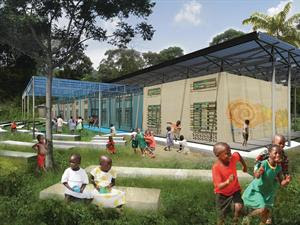Quibble of Sundog & Halo went on to say.."wasn't nazism a very honest very public and rhetorical disclosure of the racist zeitgeist then? there is more to it than talk..."
Though his reference is extreme, I agree...but of course the solution still baffles me. I'll think on this, during my infinite hours of free time this summer.
Skim selections from the thread listed below and/or check out the full discussion, which begins with a round-a-bout exchange seeking to define success in the architectural field and the word "minority", later arguing for differentiation between race and gender and a dedicated/focused discussion about african-americans and the AIA: http://www.archinect.com/forum/threads.php?id=89062_0_42_0_C
---
hillandrock 05/24/09 16:00
"Soulbrother...To seriously answer your question--- I think the public realm, architecture and urban planning (although not really unified untile the garden city movement) has been contentious towards blacks for a long time. Since the Reconstruction til the L.A. race riots, control of the public realm has been pretty openly used as a discriminatory tool against blacks and the poor. And now, that's even diversified a little more into religious, ethnic and nationalistic tendencies towards discrimination over a group of individuals-- i.e., baptist [not trying to single anyone out] communities often prohibit the sale, distribution and consumption of alcohol through land use and zoning ordinances. This essentially disrupts the rest of the community and by extension prevents other denominations of churches from being built within the same area.Once Jim Crow was phased out by the Civil Rights Act, CPTED came in to replace it. Instead of taking the word 'black' out of a lot of the property, zoning and ordinance laws... they simply replaced it with "poor." For a long time, poor and black were synonymous. If you can't attack the black legally anymore, it becomes easier to just attack the poor. Well, this is kind of backfiring as the definition of poor is growing and it targets many other people who maybe considered poor (those under the age of 30, those with no credit, those over 65). So, in a sense, I think the perception of the built environment is so heavily tarnished from the decisions of generations past and is relatively so downplayed as a source of causation... that few people are either even remotely interested in it or go on to pursue other more "worthwhile" causes. It probably wasn't until last decade that they could prove with any validity that property can be used as a form of racism, that the quality of an environment can actually cause poverty, that the built environment can actually create crime and that development patterns have a history in our very racist past.So, yeah, I think many disadvantaged and or segregated people think of city government, architecture and development as a source of their woes-- from 40 acres and a donkey to single occupancy rooms to vertical ghettos."
b3tadine[sutures] 05/25/09 9:40
"why? why are we waiting to address this issue at the University level? treekilla points to CHAD as a model, where the design community is engaging the under served at the high school level, this is a start, albeit a minor effort. why are we looking at minorities in terms of race and/or gender? why aren't we more focused on those populations at risk, under served, under represented, and severely challenged areas? poor white kids in the rural areas of the country are no less a minority class than inner city urban kids, but they are just as forgotten. what about kids of military families, they're just as poor - especially when you take into account what they have to go through or suffer through; i should know. go to a local AIA event, look around the room, see how many people look different than you, and that's where it should start, but on a local level we seem less interested in the idea of diversity than we are a national level. i was at the AIA convention in SF this year, and on a national level i have to say i was a little taken aback by the diversity, and i thought perhaps we are more diverse than i thought. then i came home and went to a local event, and i realized no we're not. so, what gives? perhaps the issue is that segregation is alive and well in the architectural community? perhaps, like Eric Holder noted; we are cowards when it comes to discussions of race, and we can't figure out how to talk to one another yet? or, even more insidiously, we don't care and don't want to talk about the past, because the past is past?"
SoulBrother#1 05/25/09 10:05
"perhaps the issue is that segregation is alive and well in the architectural community? perhaps, like Eric Holder noted; we are cowards when it comes to discussions of race, and we can't figure out how to talk to one another yet?"I think this is the problem
Quibble of Sundog & Halo 05/25/09 10:56
"or you've figured how to talk to one another but you just don't want to talk to one another. maybe when we drop the "we", we'll no longer even have to talk to one another to get along. why should anyone talk to someone from another class, culture or ethnicity just to prove a point? is it really about talk? i've met people who meditate a lot and talk very little get on very well with each other and others.
and does the freudian/catholic notion that talking brings the bad things to surface and exorcize them really work all the time? wasn't nazism a very honest very public and rhetorical disclosure of the racist zeitgeist then? there is more to it than talk..."



